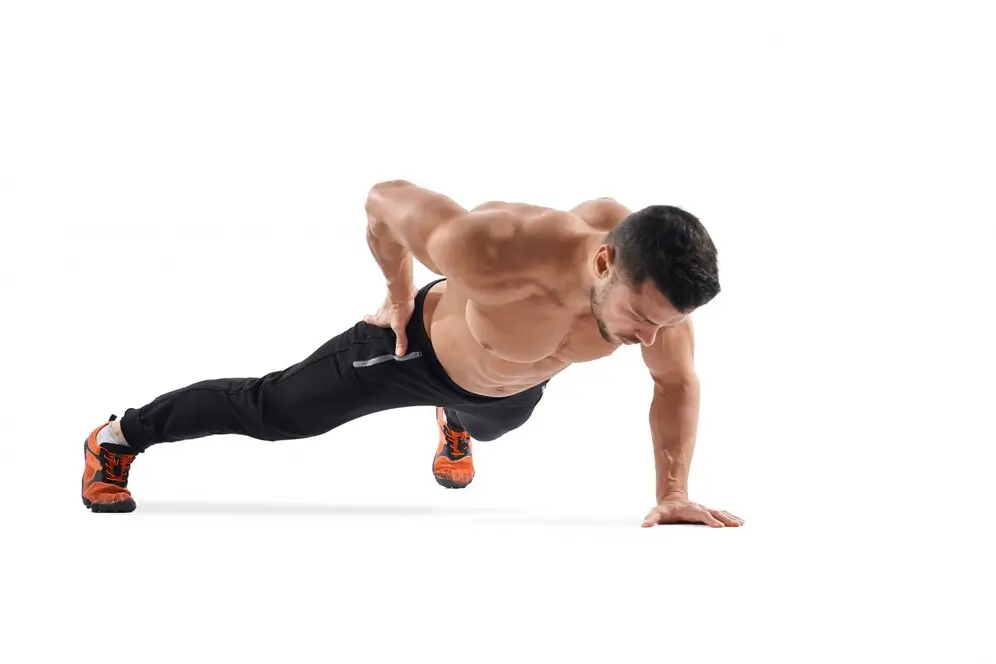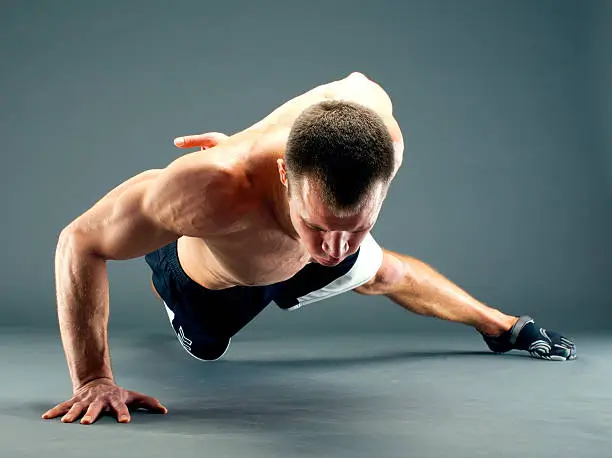Mastering the Art of the One Hand Push Up
One Hand Push Up is a challenging and impressive variation of the traditional push-up that requires not only strength but also balance and control.
Table of Contents
While it may seem daunting at first, with the right approach and gradual progression, anyone can work their way up to performing a flawless one-handed push-up.
In this comprehensive guide, we’ll break down the technique, provide step-by-step progressions, and offer tips to help you master this advanced bodyweight exercise.

Understanding the One-Handed Push-Up:
Before diving into the specifics of how to perform a one-handed push-up, it’s essential to understand the muscles involved and the proper form required.
The one-handed push-up primarily targets the chest, shoulders, triceps, and core muscles. Additionally, it engages stabilizing muscles in the wrists and forearms.
Proper Form:
1. Hand Placement:
Begin in a standard push-up position with your hands slightly wider than shoulder-width apart. Gradually shift your weight to one side, centering it over one hand.
The non-supporting hand can be placed behind your back or extended outward to increase the difficulty.
2. Body Alignment:
Maintain a straight line from head to toe throughout the movement. Avoid arching or sagging your back. Engage your core muscles to stabilize your body.
3. Elbow Position:
Keep the elbow of the supporting arm close to your body. This not only maximizes the engagement of the triceps but also reduces unnecessary stress on the shoulder joint.
Step-by-Step Progressions:
1. Master the Standard Push-Up:
Before attempting the one-handed version, ensure you can perform a proper standard push-up with good form.
This builds the foundational strength necessary for the one-handed variation.
2. Asymmetrical Hand Placement:
Start by placing one hand slightly ahead of the other during standard push-ups.
Gradually shift more weight to the stronger side to get accustomed to uneven load distribution.
3. Elevate One Hand:
Elevate the hand on one side by placing it on a raised surface, such as a step or sturdy platform.
This reduces the load on the hand in contact with the floor, allowing you to gradually adapt to the imbalance.
4. Reduce Hand Contact:
Begin shifting more weight onto one hand by gradually reducing the contact of the non-supporting hand with the ground.
This can be achieved by placing the fingertips of the non-supporting hand on the floor while maintaining balance.
5. Assisted One-Handed Push-Up:
Perform the one-handed push-up with the non-supporting hand lightly touching the supporting arm.
This provides a safety net while you build the strength and stability required.
6. Full One-Handed Push-Up:
Once you feel confident and strong enough, attempt the full one-handed push-up. Focus on maintaining proper form and controlled movement.
Tips for Success:
1. Consistency is Key:
Practice regularly to build the necessary strength and muscle memory.
Consistent training is crucial for mastering the one-handed push-up.
2. Listen to Your Body:
Pay attention to any discomfort or pain, especially in the wrists or shoulders.
If you experience any issues, reassess your form and consider regressing to a previous progression.
3. Balance Progression and Patience:
Progress at your own pace and don’t rush through the progressions.
Patience is key to avoiding injuries and ensuring long-term success.

Conclusion:
The one-handed push-up is a remarkable feat of strength that demands dedication, focus, and perseverance.
By following a systematic progression and incorporating proper form, anyone can work their way up to mastering this challenging bodyweight exercise.
Remember to prioritize safety, listen to your body, and celebrate the incremental achievements along the way.
With time and dedication, you’ll find yourself achieving the elusive one-handed push-up and reaping the benefits of improved strength and stability.